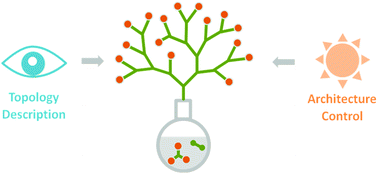Hyperbranched polymers from A2 + B3 strategy: recent advances in description and control of fine topology
Abstract
Hyperbranched or highly branched polymers from A2 + B3 step-growth polymerization have received considerable attention as an emerging area of research due to their environmentally benign, convenient one-pot synthesis and potential for large-scale production. In this review, recent advances in the description and control of their fine topological structures are presented. Quantitative description methods, including the degree of branching (DB), the average number of cyclic structures (ANC), the cyclic index (CI) and the terminal index (TI), make the quantitative description of finely branched and intramolecular cyclic topological features possible for hyperbranched or highly branched polymers. Subsequently, the advanced control strategies for the topological structure are summarized with a focus on avoiding gelation, tailoring the degree of branching and limiting intramolecular cyclization. In addition to synthesizing soluble polymers by avoiding gelation and tailoring the degree of branching by introducing linear components, the limitation of intramolecular cyclization is the key factor in obtaining perfect hyperbranched structures with numerous terminal groups. The advances in the quantitative description and control of fine topological structures of hyperbranched polymers will promote their development and application in various fields, including traditional polymer materials and engineering and emerging biomedicine materials, energy materials and optoelectronic materials and devices.


 Please wait while we load your content...
Please wait while we load your content...